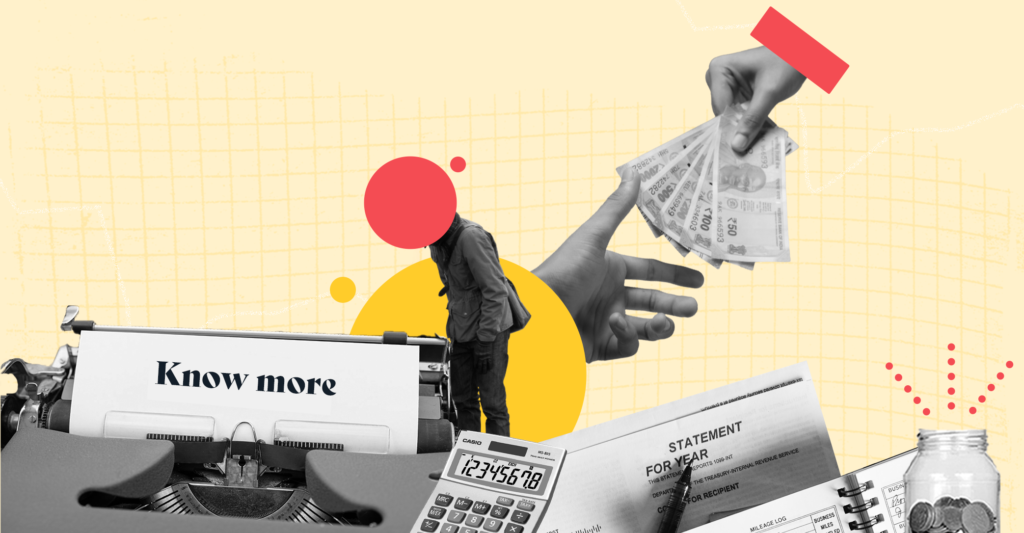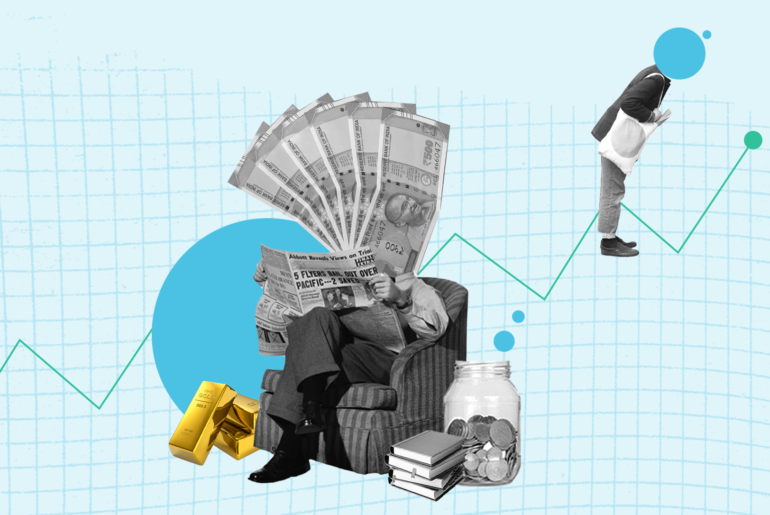Last Updated on May 24, 2022 by Anjali Chourasiya
People draw out loans for various purposes. It could be for education, marriage, or even credit cards bills and other liabilities like EMIs on expensive products and purchases. Tracking, managing, and repaying all these debts on time can be overwhelming and a hassle.
Thankfully, there is a way to roll all your debts, loans, and liabilities into one and repay it as a larger loan over a fixed duration. This is possible through debt consolidation. Let’s explore debt consolidation and its key benefits.
Table of Contents
What is debt consolidation?
Debt consolidation is the process of drawing a new loan to pay older loans, liabilities, and debts that may have accumulated over time. It allows the consolidation of smaller debts into a single large loan for a fixed period. Using debt consolidation, you can save on the skyrocketing high interest you might have been paying on several smaller loans that may have been accrued over time.
You can use the debt consolidation method to consolidate several debts and loans like home loans, car loans, personal loans, credit card loans, loans against property, insurance, mortgage, and many more such liabilities.
Debt consolidation might be an excellent method for you if you have multiple loans and outstanding debts where different interest rates are applicable.
How does debt consolidation work?
For example, if you have five credit cards, and each credit card has an overdue expense of Rs. 10,000. The total money you owe to credit card companies is Rs. 50,000. However, the interest rate levied on these cards might differ. Some cards may carry a 14% interest, while some may carry a 16% interest.
In this situation, here’s what debt consolidation may look like:
- Draw out a loan worth Rs. 50,000 at an interest rate lower than 14%. It helps to have a good credit score and a stellar repayment history to retain bargaining power with interest rates.
- Choose a repayment schedule at your convenience.
- Repay the debt for all five credit cards.
- Sit back and repay your consolidated debt at a lower interest rate as per your schedule.
Debt consolidation is just like any other loan. The documentation, eligibility, and application process remain nearly identical. However, banks and financial lending institutions will require you to sign a debt agreement which is a contract between the borrower, i.e., you and the lender. This agreement legally binds you to only use the loan’s proceeds for debt repayment purposes. The debt agreement also states the repayment schedule.
Non-adherence to the norms of debt agreement may lead to heavy penalties and fines.
Documents required for debt consolidation
Proof of income: It is only natural that the lenders and banks may want to know your source of income for repayment assurance.
Credit history: A poor credit history could potentially decrease your chances of getting debt consolidation. Having a clean credit history and financial record can be beneficial for a quick process.
Financial stability: It is important for the lendee to have proof of financial stability. A person engaged in a high-cost lifestyle or other unrealistic life scenarios could be rejected for debt consolidation.
Collateral documents: Collateral documents are necessary to provide to lenders in case the lendee becomes insolvent. Home papers or even equity documents may have to be provided.
Features of debt consolidation
Flexible loan tenure
You may opt for a flexible repayment schedule when you opt for debt consolidation with a bank or any other financial institution. You can opt for a 6-mth EMI to a 12-mth EMI or even more, depending on your loan amount. If you have a more considerable loan amount, you can choose the repayment schedule at your convenience.
Attractive interest rates
Banks will offer you a loan for debt consolidation. The interest rate on this loan will depend on your credit history, repayment history, and your CIBIL score. If you have a good score, you may be offered a lower rate of interest which will help you reduce the total amount you will have to repay the bank.
Collateral-free loans
Short-term loans or loans worth a small amount may not require you to provide collateral. Loans with a larger value may need you to provide collateral.
Benefits of debt consolidation
- You will be able to pay all your impending debts before time. This reduces the chances of being charged a late payment fee, further eroding your savings.
- Financial institutions and banks generally offer a lower interest rate than what is being levied on a debt product or a liability. This helps reduce the net payable amount.
- While you may temporarily see a dip in your credit score when you start debt consolidation, your credit score will start going up as you keep repaying on time.
- With just one loan taking care of everything, you no longer need to spend time micro-managing debt repayments.
Risks associated with debt consolidation
One of the major risks associated with debt consolidation is that it can push you deeper into debt. You basically are not getting rid of your debt rather just piling it all into one scheme. It can be a never-ending cycle of loan repayments, not allowing you to solve your credit crisis.
Not all consolidation schemes are genuine and fair. You can end up in a financial disaster if you get caught by the wrong financiers and fraudsters, which are common in the field.
Total cost and interest rate may not be as attractive as on paper. With stretched timelines on repayment and higher interest rates (in some cases), debt consolidation may not always be the right choice.
Conclusion
Debt consolidation can be considered if you have sufficient cash flow to cover the repayments and want to consolidate all your debts under one loan. It will help you easily track the repayment and you won’t have to make separate payments for different debt instruments.
- Top Fund of Funds (FOF) in India – Full Form, Types & More - Mar 28, 2025
- Bond Funds – Meaning, Types, Risks, and Benefits - Mar 27, 2025
- Money Market Mutual Funds: Meaning, Benefits, Liquidity and Taxation - Mar 13, 2025




